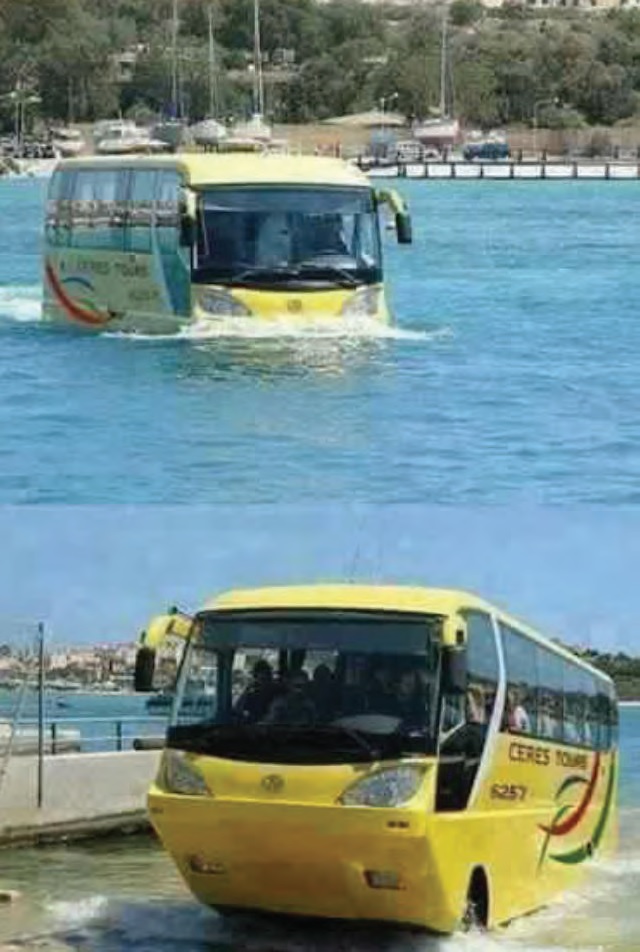Vallacar Transit Incorporated (VTI) began as a family-owned and managed business that has grown from a lone 14- seater jeepney business called Ceres Liner plying a single route, to a conglomerate of transportation companies with a combined number of 4,000 transport vehicles nation wide. The company pioneered inter-modal services between Negros, Cebu, Mindanao, Leyte, Panay, and Luzon. It also pioneered inter-modal transport services utilizing the Strong Republic Nautical Highway from Cubao in Quezon City to Zamboanga City in Mindanao.
Ceres Liner is an inter-city bus liner company under the umbrella of Vallacar Transit Inc., the largest public land transportation company headquatered in Barangay Mansilingan, Bacolod City, Negros Occidental. It operates bus transport service to all of Negros from Bacolod City to Panay, Cebu, Bohol, Samar, and Leyte.
Ceres Liner was founded in 1968 by Ricardo B. Yanson and his wife, Olivia Villaflores Yanson. The lone jeepney led them to the jeepney-assembly business. In the early 1970s, when the market was flooded with Ford Fieras, the Yanson couple diversified into the small bus line business which plied the Bacolod City-Valladolid- La Carlota route (thus, the Vallacar Transit umbrella) and christened it Ceres Liner. By 1980, Ceres Liner’s services covered the whole province of Negros.
In 1981, VTI ventured into Mindanao. By 1985,they bought out Fortune Express and Bachelor Express, both Cagayan de Oro-based companies, and formed the Ceres Liner RTMI Vallacar Transit, as agreed in the contract of sale. RTMI stands for Rural Transit of Mindanao Inc. In 2005, the conglomerate bought out Lilian Express and its sister company Mary May Express, and became the dominant transit conglomerate in Mindanao.
In 2007, Ceres Liner in Iloilo pioneered travel between Iloilo City and Metro-Manila through the Western Nautical Highway. In 2009, the conglomerate expanded its profitable Metro-Manila operations, and established the Ceres Transport Inc. based in Batangas City. The company would now provide bus services to Cubao, Batangas, Mindoro, Aklan, Antique and Iloilo.
In 2012, the conglomerate bought a franchise of Gold Star Bus, and allowed the Gold Star Bus to operate its Batangas-Cubao and Batangas-Alabang routes.
Recently, the floating bus surfaced and it appears Ceres Liner has captured the interest of the local tourists to ride the floating bus from Bacolod to Iloilo.
However, Commo. Carlos L. Agustin (President, Maritime League) finds the floating bus top-heavy. He adds, “by entering water areas, the domain of MARINA and PCG, the land transport operator needs to subject the bus to stringent navigational safety rules that will require lifesaving appliances, navigation equipment, safety inspection and surveys, etc. There’s a big difference between this bus and amphibious landing vehicles. In amphibious vehicles, passengers are placed lower, and the sidings are hollow and watertight. Nevertheless, they are seldom used in heavy seas, except when required to land troops or for search and rescue in flooded areas. The bus as shown will need ballasting and possibly some side tubing to act as floats or outriggers in case of rough weather. The bus will need to pass IMO rules on passenger boats. It must comply with this MARINA regulation (see http://www.
marina.gov.ph/policies/MCs/MC%202013-02.pdf).”

Hallo from Ireland,
Wen read with interest your article about the amphibious bus.We are designers, builders and operators of amphibious vehicles in Ireland.We would be happy to give you the benefits of our experiences in this market with over 10 years operating experience.
We completely understand the technical challenges and are happy to share with this company.One of the strenghs of our business are our employees and among a crew of 40 plus we have 4 key employees from Cordon, Isabella area of the Philippines
We admire your entrepreneurship and wish the company every success .
Greeting from USA
May route na from Mansilingan Bacolod to Antique floating Ceres Bus?
Ceres should consider also putting up for trips lasting over 1 hour toilet facility on their buses. This is mandated in some countries as it is a big help for riders who are elderly and medically handicapped. This is also a big plus for tourists to ride these buses.